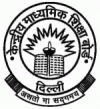CBSE: Promoting Heritage Education Programmes in Schools
Disclaimer: This website is NOT associated with CBSE, for official website of CBSE visit - www.cbse.gov.in
Central Board of Secondary
Education
Promoting Heritage Education Programmes in Schools
As you are aware CBSE has recently launched several programmes to promote heritage education in schools including the celebration of World Heritage Day, Adopt-a-Monument programme and functioning of Heritage School Clubs. The Board firmly believes that heritage education is important for the following reasons:
- To bring history and the social science curriculum alive for the students through active learning and doing.
- To promote awareness of and involvement in heritage to inculcate a respect for diversity, tolerance, mutual understanding, patience and promotes peaceful co-existence in school children.
- To inspire young children and encourage them to build a future through an understanding of the past and the present.
- To equip children to understand and explore their local heritage and gain a confident sense of self.
- To encourage children to learn about national heritage as well as gain exposure to different heritages around the country.
Heritage is a conceptual identity of an area which includes not only built tangible heritage but has intangible aspects like its language, lifestyles, ceremonies, festivities, work cultures inherent /specific of a community.
To create and enact a heritage education programme for your school, you need to draw a Plan of Action comprising activities, programmes and projects planned through out the year depending on the resource availability. Just a small local site visit can bring alive a number of aspects of a history textbook. For this, an activity sheet would need to be designed and an expert found to conduct the walk. If no expert is available, a teacher can lead the walk with a little research. For heritage education programmes we need to encourage schools and teachers to use local resources and fall back on local monuments, museums and experts.
CBSE recently met with the Sahapedia team in New Delhi to discuss ways to popularize heritage education in schools nation-wide. Sahapedia is an online encyclopedia on Indian culture and heritage whose main goal is to serve an educational resource for school students and researchers. In particular, Sahapedia is in the process of developing modules for heritage education for school teachers that include learning modules/heritage workbooks, heritage walks and heritage clubs. Please look at the concept note on Sahapedia and their heritage education section called “Saha Learn”, attached herewith to understand their project in the fullest.
The Sahapedia team as part of the Heritage Education Group at
CBSE, New Delhi, has developed a list of ideas and guidelines herewith for your
perusal to help you design a project for your school. We also request you to
first fill up the questionnaire that has been developed and uploaded along with
this circular to understand the state of heritage education in your school and
the kinds of help you may need to start a programme. Kindly submit this
questionnaire online by 20th November 2011 to enable us to get back to you with
desired help/resources.
We at CBSE feel that heritage education is a very important part of the learning
process. Shortly we may also be starting a heritage corner on our website for
better interaction with you on all aspects of heritage.. Please also refer to
Sahapedia’s current website: http://sahapedia.wordpress.com as a resource for
your heritage education programme. We look forward to your feedback and to your
efforts at creating a heritage education programme with your school.
Copy with a request to respective Heads of Directorates/KVS/NVS/CTSA as indicated below to also disseminate the information to all concerned schools under their jurisdiction:-
- The Commissioner, Kendriya Vidyalaya Sangathan, 18-Institutional Area, Shaheed Jeet Singh Marg, New Delhi-110 016.
- The Commissioner, Navodaya Vidyalaya Samiti, A-28, Kailash Colony, New Delhi.
- The Director of Education, Directorate of Education, Govt. of NCT of Delhi, Old Secretariat, Delhi-110 054.
- The Director of Public Instructions (Schools), Union Territory Secretariat, Sector 9, Chandigarh-160 017.
- The Director of Education, Govt. of Sikkim, Gangtok, Sikkim – 737 101.
- The Director of School Education, Govt. of Arunachal Pradesh, Itanagar-791 111.
- The Director of Education, Govt. of A&N Islands, Port Blair-744 101.
- The Secretary, Central Tibetan School Administration, ESSESS Plaza, Community Centre, Sector 3, Rohini, Delhi-110 085.
- All the Regional Officers of CBSE with the request to send this circular to all the Heads of the affiliated schools of the Board in their respective regions.
- The Education Officers/AEOs of the Academic Branch, CBSE.
- The Joint Secretary (IT) with the request to put this circular on the CBSE website.
- Joint Secretary(ACAD).
- The Library and Information Officer, CBSE
- EO to Chairman, CBSE
- PA to CE, CBSE
- PA to Secretary, CBSE
- PA to HOD (AIEEE)
- PA to HOD (Edusat)
- The PRO, CBSE
Click Here For More Details
Courtesy: cbse.nic.in
